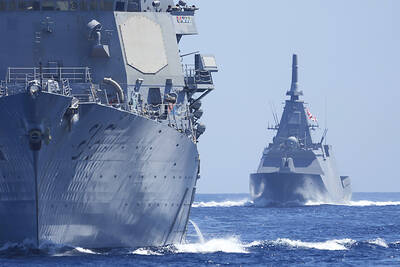A malfunctioning lithium-ion battery might have sparked a deadly fire on a top-secret Russian nuclear submersible earlier this month that killed 14 naval officers, according to reports.
The Kremlin has remained tight-lipped about the incident, citing the sensitive nature of the submarine, AS-31, also known as the Losharik, but at a funeral service for the decorated sailors, a navy officer claimed they died preventing a global catastrophe, alluding to a threat from the nuclear reactor.
However, details of what took place leaked to Russian media suggest a different story.
Investigators told Kommersant that a leading theory behind the fire in the Barents Sea on July 1 was battery failure.
The submersible was equipped with a lithium-ion battery made in Russia to replace older, proven batteries procured from the Ukrainian defense industry.
Advanced batteries were one of many components sourced by the Russian military from Ukraine before Moscow’s 2014 annexation of Crimea.
Ukraine banned exports of military goods in response, forcing Russia to pursue crash programs to develop domestic alternatives.
One of the major losses for the Russian navy were Ukrainian-made diesel turbines used to drive surface ships.
That put the construction of an entire class of new Russian frigates on hold and only recently have Russian turbine manufacturers been able to catch up.
Little is known about the Losharik, but publicly available information paints a picture of a unique boat designed to dive to extreme depths well beyond those most modern submarines are rated for.
The submersible is able to achieve the depths due to its unconventional design: seven titanium spheres housed inside an unpressurized outer hull that resembles a modern submarine.
The boat is understood to be equipped with mechanical arms and small underwater drones.
Operated by the deep-sea research directorate, the Losharik is capable of, among other things, tapping and cutting fiber-optic communications cables lining the ocean floor.
The directorate is not formally part of the Russian navy, but rather a naval intelligence service subordinate to the general staff, similar to the GRU military intelligence service blamed for the poisoning of former Russian spy Sergei Skripal on British soil.
The Losharik is also unique in that it is designed to be ferried into an operations area by a larger “mothership,” understood to be a heavily modified Delta IV-class ballistic missile submarine known as the Podmoskovye.
The fire broke out as the Losharik was docking with mothership the Podmoskovye, Kommersant reported.
The sailors died attempting to control the blaze.

A fire caused by a burst gas pipe yesterday spread to several homes and sent a fireball soaring into the sky outside Malaysia’s largest city, injuring more than 100 people. The towering inferno near a gas station in Putra Heights outside Kuala Lumpur was visible for kilometers and lasted for several hours. It happened during a public holiday as Muslims, who are the majority in Malaysia, celebrate the second day of Eid al-Fitr. National oil company Petronas said the fire started at one of its gas pipelines at 8:10am and the affected pipeline was later isolated. Disaster management officials said shutting the

US Vice President J.D. Vance on Friday accused Denmark of not having done enough to protect Greenland, when he visited the strategically placed and resource-rich Danish territory coveted by US President Donald Trump. Vance made his comment during a trip to the Pituffik Space Base in northwestern Greenland, a visit viewed by Copenhagen and Nuuk as a provocation. “Our message to Denmark is very simple: You have not done a good job by the people of Greenland,” Vance told a news conference. “You have under-invested in the people of Greenland, and you have under-invested in the security architecture of this

UNREST: The authorities in Turkey arrested 13 Turkish journalists in five days, deported a BBC correspondent and on Thursday arrested a reporter from Sweden Waving flags and chanting slogans, many hundreds of thousands of anti-government demonstrators on Saturday rallied in Istanbul, Turkey, in defence of democracy after the arrest of Istanbul Mayor Ekrem Imamoglu which sparked Turkey’s worst street unrest in more than a decade. Under a cloudless blue sky, vast crowds gathered in Maltepe on the Asian side of Turkey’s biggest city on the eve of the Eid al-Fitr celebration which started yesterday, marking the end of Ramadan. Ozgur Ozel, chairman of the main opposition Republican People’s Party (CHP), which organized the rally, said there were 2.2 million people in the crowd, but

JOINT EFFORTS: The three countries have been strengthening an alliance and pressing efforts to bolster deterrence against Beijing’s assertiveness in the South China Sea The US, Japan and the Philippines on Friday staged joint naval drills to boost crisis readiness off a disputed South China Sea shoal as a Chinese military ship kept watch from a distance. The Chinese frigate attempted to get closer to the waters, where the warships and aircraft from the three allied countries were undertaking maneuvers off the Scarborough Shoal — also known as Huangyan Island (黃岩島) and claimed by Taiwan and China — in an unsettling moment but it was warned by a Philippine frigate by radio and kept away. “There was a time when they attempted to maneuver